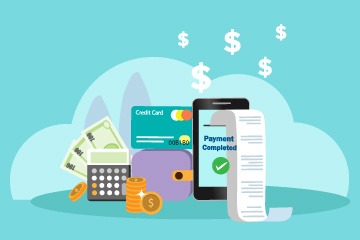The first version of the European Union’s PSD payments regulation hit the globalbanking sector back in 2007. Its successor PSD2, comes into force on 13th January 2018. The intervening 11 years have seen more innovation in banking than inthe entire previous century thanks to digital banking and the rise of new FinTech players.
Banking customers have enthusiastically embraced new banking services from fintech and digital disruptors. The new PSD2 regulation is designed to improvesecurity compliance for banks, improve innovation by collaboration and drive down costs for consumers.
Some predict great things from the new law. The UK’s Competition and Markets Authority predicts savings to customers of between $700m and $1bn. A significant by-product of this will be greater competition for banks.
A Forrester report – “The Open Banking Revolution Is Imminent”- quotes that “Open banking will transform the landscape, promoting transparency, innovation, and greater choice for customers, and it will force all banks — not just the enlightened ones — to place customers at the centre of the value chain. In reality, much of the innovation will be through the evolution of banking business models as banks collaborate more willingly with disruptors and fintechs, as well as explore new business models based around marketplaces and service provision. Digital business strategy executives must recognize that open banking drives positive, as well as negative, outcomes.”
Some of the outcomes stated in the report are:
- Increased access to product data and information about quality of a banking provider
- More tailored products
- Simplified inter-operability and amplified collaboration
- Business models will evolve, favoring ecosystem-based banks
- Lower barriers to e ntry, thereby stoking innovation
Customers and partners will be at the centre of the value chain in the Open Banking era. Apart from delivering more transparency, innovation and choice for customers, banks have to predict, map and build customer journeys tailoredfor every Financial Services user, well beyond the traditional product they offer. Not only that, banks will make very difficult decisions on which Developer community, FinTechs , traditional and non-traditional product supplier they should partner with, as the industry becomes a living, vibrant ecosystem. Darwin’s evolution theory unexpectedly comes to the fore as some innovators will seize the opportunity to collaborate, while others will cease to exist.
Opportunity knocks
Open Banking is a huge opportunity for banks to be part of every transaction the customer makes, increase their value to customers and drive revenue growth. Offering differentiated services and creating customer delight has the effect both of ‘retaining more of the pie’ and actually increasing the pie itself thanks to new possibility of extended services and product offering from the ecosystem.
Interestingly, not all the value which banks can provide needs to be internally-built. Smart partnerships with third parties offering complementary services offer exciting new ways to expand the bank business well beyond their known constraints which are largely internal. What becomes crucial is the ability to identify the related offerings in the journey that the customer is seeking out for and have relevant partnerships that can make these offerings possible as part of the bank ecosystem.
Simply put, those banks who understand and predict customers intent and who can partner with the most relevant providers and create the most compelling offers will win out. Banks have to become true marketplaces which deliver value to customers at every click. Banks at the centre orchestrating the customer value flow between B2B to the B2C are the truly transformed bank.
PSD2 has been a long time coming and many leading banks are getting their plans ready, way beyond the compliance. Their teams are working out to understand how providing the best of breed partner ecosystems could affect their business, positively as well as negatively. In fact, banks need to create platforms which are attractive to partner community and they need to make themselves comfortable with this more partner-friendly future.
There are also threats
Making customer information available to others, including rivals is a big step for banks who like to keep not just their customers’ money but also to control their financial information. Handing over customer information to third parties cannot be done irresponsibly (GDPR Compliance –that’s to be covered in my next paper), so banks also need to ensure they can keep some control and complete security over the information they share whilst, at the same time, providing their customers with what they are looking for. In essence, banks need to see themselves more as a financial services marketplace than a one stop shop.
Bank who do end up being part of the end to end value chain for the customer, offering a set of products and services jointly developed with partners offering complementary products, will require a new mind-set and a robust price governance. The payoff though is more customer intimacy and increased revenue.
New marketplace ecosystems and revenue models
Banks can look at its ‘marketplace’ and begin to see problems from a customer’s point of view. Instead of merely selling a customer a mortgage, sales teams can focus on the “why”of ‘buying a house in a more holistic way. They can assess which other products and services are needed during a house move? To succeed though, we believe banks need to excel at capabilities they may not do well today. To show customers they really are at the centre of their thinking, banks need to have greater insights on why the customer is looking at a traditional product and what could be the possible related offering that could go with and are probably beyond the traditional products of the banks. This can be serviced by building the right partnership as part of the ecosystem. Using analytics they can even identify sales opportunities which a customer themselves may not have vocalised.
As banks increasingly try to be part of every transaction the customer makes, new revenue opportunities occur. Although a bank may not offer a particular customer service, instead allowing a partner to offer its service, either ‘white labelled’ and invisible to the customer or jointly branded, it may earn a variety of new revenues e.g. ‘commission fee’, ‘subscription fee’, ‘usage fee’. This revenue sharing, though common in many online businesses, may be a first for some banks.
The opportunity to monetise API or business services or business product either as a service call,or as business value delivered, or as extended product offerings to improve cross-sell, while at the same time make it relevant to what the customer is looking for, more proactively takes the banks’ brand value way up. Understanding the cost of servicing every request is important and hence the need for the segmentation of the API as Public, private and personal becomes relevant. A single public API call can internally translate into multiple calls (API) depending on the complexity of application architecture of each bank. Understanding the cost of servicing internally helps in pricing the service right and ensuring two things – profitability and areas for optimisation.
Finding the right partner and securing their loyalty
With Open Banking, banks can more clearly draw insights on the rival products multi-banking customers are using. The first few months will be crucial as banks ‘eye up’ each other’s customers and look to cherry pick partners they feel are most lucrative before others do.
Building a dynamic marketplace is just the start. It is really just a live test bed for future customer interactions, a way to test the attractiveness of offers, partners and bundles based on patterns of usage. To secure long term relationships, banks should know the gaps in their offerings and be open to collaboration.
Commercial incentivization is key to any partner agreement. As banks solve more of their customers’ issues they offer more value to customers, perhaps allowing partners’ access to customers in return for a revenue share. Alternatively banks can consider pure revenue share to their ecosystem based on achieving performance related goals.
The complexity of disruptive business models makes securing a worthwhile partner relationship more difficult. These may include sophisticated financial products which involve contracting, guarantees and agreed tariff plans never seen before and allowing for revenue splits; perhaps thousands of them with hundreds of partners. This would also bring in the complexities of managing different pricing and revenue models with the large number of partners in the network and thereby necessitate a discipline in terms of price governance, costing, brand risk management and revenue management practices followed by the banks.
Delivering the right offer
Even after a ‘steady state’ occurs post the initial rush when PSD2 becomes law, detailed monitoring of partners and customers will become a key competitive differentiator. Whilst it is critical to manage and monitor interactions, without the ability to respond in real-time with the appropriate pricing/monetisation and transparent billing for usage, consumption or direct sales of services, it will merely give bankers a front row seat as their customers and recently engaged partners head out the door.
The potential for new revenue streams is really only limited by imagination. The GAFAnomics has set the standards and norms on new age digital revenue model, which the customers are familiar with, like for e.g. the subscritpion, freemium ,ecosystem to name a few. Banks with high digital ambition and who are in the transformation journey to become an open bank will need capabilities to offer and support these all familiar revenue models.
Transforming banks for an open future
Banks need to be more like a marketplace, like Amazon for high street brands, and less like stallholders. The change in customer behaviour driven by PSD2 will likely test the resourcefulness of every bank in their ability to build a bank platform of the future with the right partner ecosystem and their agility to respond to constantly changing “business models” with each stakeholder in the open ecosystem
Creating a partner centric platform which provides customer access,helps product innovation,is highly rewarding, provides behaviour-based incentives and offers transparency is what would attract and retain the right partner, which is critical for the success of building the marketplace.
The ability to find the right partner and leverage these partnerships towards a common goal of customer centricity will be the most successful formula. We’ve given the future of banking a lot of thought and we believe the banks who will thrive can predict and address customer and partners values in real-time as PSD2 is a catalyst that can push the open banking transformation wave forward by leaps and bounds. The time has truly come.






